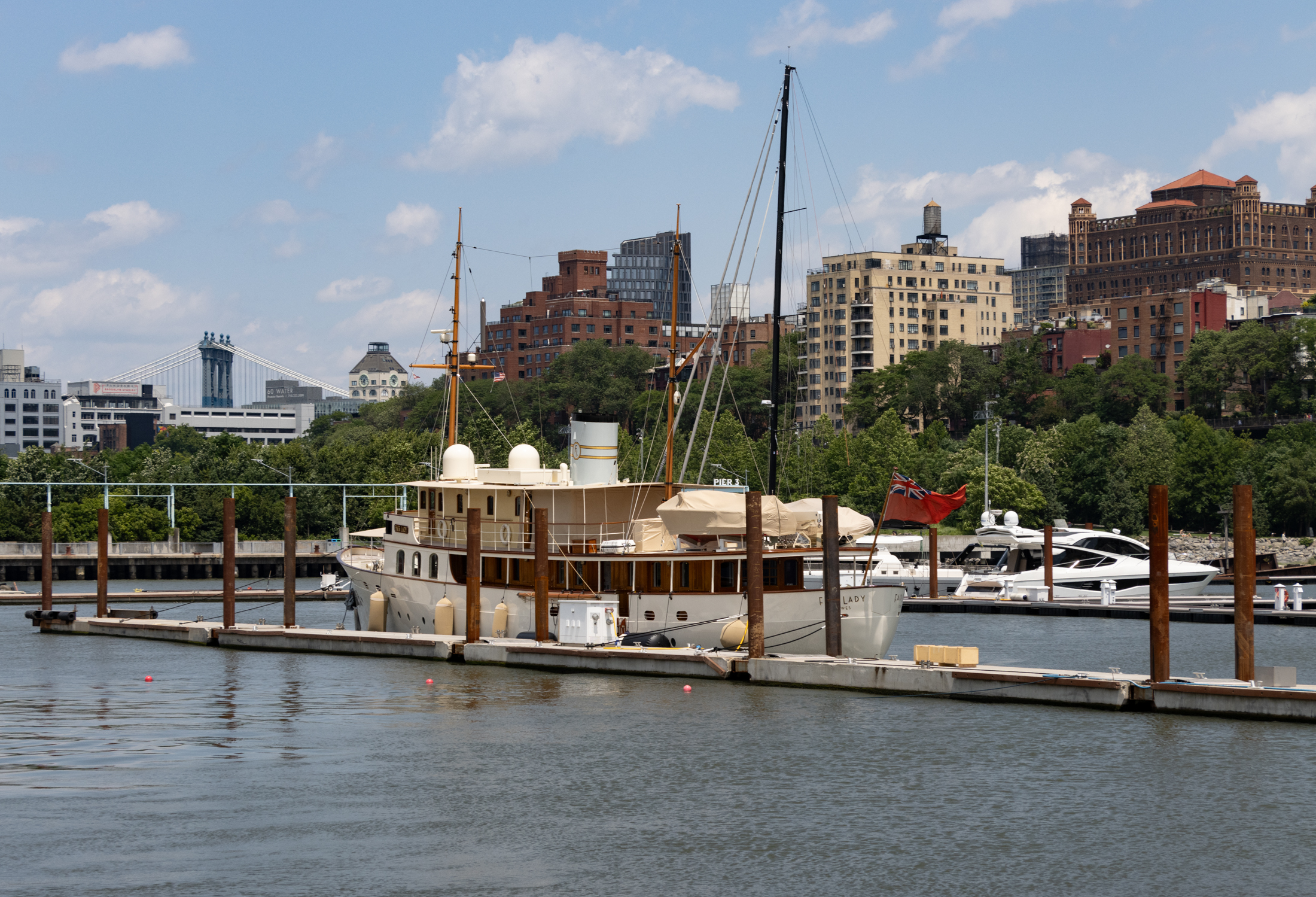Zion Church, Douglaston
Nearly 20 ForgottenFans enjoyed Forgotten New York’s Little Neck-Douglaston tour this past weekend. Unusually for recent tours, this time the weather was threatening, but rain only started falling as the tour was ending. Little Neck and Douglaston are far richer in Colonial history and artifacts than many would immediately expect, and this tour mined that…


Nearly 20 ForgottenFans enjoyed Forgotten New York’s Little Neck-Douglaston tour this past weekend. Unusually for recent tours, this time the weather was threatening, but rain only started falling as the tour was ending. Little Neck and Douglaston are far richer in Colonial history and artifacts than many would immediately expect, and this tour mined that history, shining a light on several hidden artifacts.
Above is shown Zion Church, whose grounds are entered via a lengthy path from Northern Boulevard just east of Douglaston Parkway.
Major Thomas Wickes, a patriot originally from Huntington, owned the entire Douglaston peninsula jutting into Little Neck Bay after the Revolutionary War, and subsequently sold it to Wynant Van Zandt in the 1810s. Scotsman George Douglas purchased the peninsula from Van Zandt in 1835. The region was later developed as a suburban resort and exclusive enclave, and enjoys pleasant views of Little Neck Bay and Long Island Sound. Streets were laid out in 1906 by the Rickert-Finlay realty company, who had purchased the property from William Douglas, George’s son, and eclectic, individualistic homes were built in the area, which has always been among Queens’ most affluent. The streets have retained their original names and have ignored the Queens mania for giving every street a number. The Douglas name was appended to the area in 1876, after William Douglas had donated a Long Island Rail Road stop. Today, mansions in Douglas Manor can sell for $4 million or more.
On April 15, 1829, the leading men of the community drew up a document that announced their intention to build a church and later a school for the farming community. Land was donated by Wynant Van Zandt, for this purpose, and the church began construction in 1830 on what was the highest land on the Van Zandt farm. Pastor Henry Beare arrived at Zion in 1842 and served the church for fifty years. It was his idea to name the area Douglaston for George Douglas, a regular in the Zion pews who purchased the property from Van Zandt.
After a devastating fire ravaged the church in 1924, it was reconstructed following the lines of the original.

Little Neck’s early days featured a colorful character, the “Bard of Little Neck,” or “The Long Island Farmer Poet” Bloodgood Haviland Cutter (1817-1906), potato farmer, poet and acquaintance of Mark Twain, who immortalized him as the “Poet Lariat” in Innocents Abroad, a travelogue concerning his trip to the Holy Lands in the Middle East. Twain poked fun at Cutter as a master of doggerel who annoyed fellow passengers in the book. Cutter self-printed many editions of his verse, which are little-read today. He owned numerous parcels of land in Little Neck, Great Neck, Manhasset and Plandome that he purchased or inherited. Cutter Mill Road in Great Neck, on the site of a mill he purchased from the Allen family, is named for him.
In Innocents Abroad, Mark Twain mentioned Cutter:
He is 50 years old, and small for his age. He dresses in home spun, and is a simple minded, honest, old fashioned farmer with a strange proclivity for writing rhymes. He writes them on all possible subjects and gets them printed on slips of paper with his portrait at the head. These he will give to any man that comes along, whether he has anything against him or not. He has already written interminable poems on ‘The Good Ship Quaker City’ and an ‘Ode to the Ocean’ and ‘Recollections of the Pleasant Time on Deck Last Night’, which pleasant time consisting in his reciting some 75 stanzas of his poetry to a large party of passengers convened on the upper deck.
When Cutter died in 1906 he left $750K of his fortune, mush of it inherited, to the Long Island Bible Society and the rest of his fortune was divided among 232 heirs.

ForgottenFans gather at the Matinecoc Indian Monument in the Zion churchyard.
By 1636 Europeans had driven the Matinecoc Indians, the area’s original settlers, out of the area along the North Shore east of Little Neck Bay called Madnan’s Neck after an Indian word meaning “place of fish.” Madnan’s Neck was subdivided into Little and Great Neck, after their relative sizes. Little Neck developed as a fishing village after the famed “Little Neck” clams were discovered in Little Neck Bay in the 1830s. But the bay was overfished and polluted after a few decades, though Little Neck Bay still has a lively recreational boating scene.
The Matinecoc Indians, a branch of the Algonquin group, had occupied the lands of eastern Queens for centuries before Europeans arrived. While the Matinecoc tribes gradually sold off their holdings to the Dutch and British in other parts of Long Island, giving the lands a peaceful transfer, Thomas Hicks (of the Hicks family that settled Hicksville) forcibly evicted the Matinecocs in Little Neck.

Photo via NYC Archives
Much later, when the Flushing and Hempstead Turnpike, also known as Broadway and presently, Northern Boulevard, was being graded and widened, the graves of the Matinecocs were discovered. They were reinterred in the Zion Episcopal Church cemetery in 1931. A stone marker, designed in two pieces on either side of a tree, is marked “Here Rest the Last of the Matinecoc.”





What's Your Take? Leave a Comment